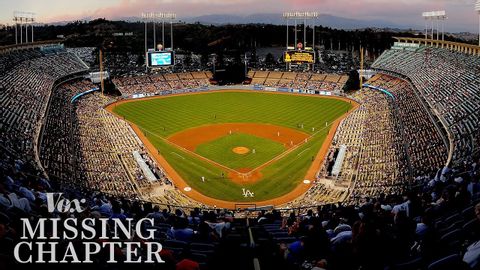这个标志性棒球场的黑暗遗产(The dark legacy of this iconic baseball stadium)
joey joey 發佈於 2021 年 05 月 18 日  沒有此條件下的單字
沒有此條件下的單字US /kæmˈpen/
・
UK /kæm'peɪn/
- v.i.領導運動
- n. (c./u.)(尤指政治、商業或軍事的)專門活動,運動;軍事行動;(政治或商業)活動
- v.t.推廣
US /kəˈmjunɪti/
・
UK /kə'mju:nətɪ/
- n. (c./u.)社區;團體;社群意識;線上社群;(生態)群落;實務社群;歐盟
- adj.社區的;共同的
US /ˈprɑpəti/
・
UK /'prɒpətɪ/
- n. (c./u.)特徵,屬性;物業,物業;財產;道具

